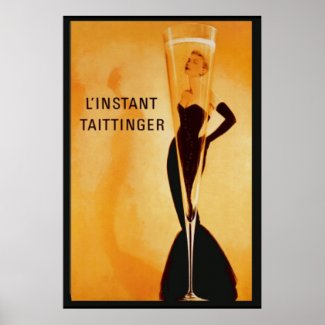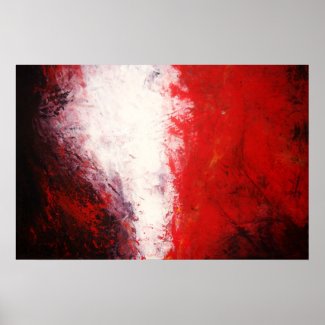
Delaunay: Rhythm, 1946
Sonia Delaunay
9 in. x 12 in.
Buy This at Allposters.com
Cubism, the first of the three great innovating movements in twentieth-century art, begins in 1907 with Picasso Les Demoiselles d'Avignon and ends, some say, about 1921. Actually cubist principles and devices continue down to the present in the art of such masters as Picasso and Braque. Under the above heading, The Cubist Generation in Paris, are grouped their works early and late, cubist and non-cubist, together with those of their major colleagues, Gris, Léger, Lipchitz and others, lesser or more marginal. A few -- Duchamp, Malevich, Mondrian, Rivera -- who left the movement to help generate other revolutions.
Moscow is far richer in Picasso's Blue, Rose, and "Negro" periods (though long hidden. from public view as subversively "formalist"); Basel probably surpasses us in analytical cubism, Philadelphia in cubist collages, the Solomon R. Guggenheim Museum here in New York, in paintings by Delaunay, Gleizes and Metzinger; and the Paris Musée d'Art Moderne in the work of the past decade in which the Museum is deficient. Nevertheless the cubist generation, by and large, is more comprehensively represented in the Museum of Modern Art than in any other public collection in the world.
Of these riches, because of limitations of space and color plates, can offer only a sampling: for instance, two of eight oils by Braque, two of ten by Léger, eight of sixteen by Picasso, two of eight by Gris, three of eight sculptures by Lipchitz.
In 1904 Picasso was living in an ancient wooden tenement on Montmartre among poverty-stricken poets, actors, clerks and laundresses. A little earlier, he himself had known starvation so that the Frugal Repast is based on firsthand experience.
Avoiding sentimentality which had softened some of his "Blue" canvases he draws the woman and her blind companion with their wine and crust of bread. Their emaciation seems appropriate but it is largely a matter of mannered style, and so is the elaborately studied composition of the hands (which may be compared to Kokoschka's, opposite).
Picasso was twenty-two at the time and the Frugal Repast, technically a tour de force, was his first major etching. It remained perhaps his greatest, certainly his most ambitious, print until the Minotauromachy of 1935.
Possibly the mannered attenuations of Picasso Frugal Repast were inspired by El Greco. In any case, two years later on a summer's trip to Spain in 1906 Picasso renewed an early enthusiasm for the great sixteenth-century Mannerist. During the same year Picasso had been stirred by Spanish art of a much earlier period, pre-Christian "Iberian" sculpture; and he had been deeply impressed by the memorial exhibition of Cézanne's work.
Picasso and Matisse had already met at Leo and Gertrude Stein's apartment and were beginning to feel that rivalry, alternately friendly and jealous but always implicitly flattering, which they were to maintain for decades. Matisse had shown his very large and controversial Joy of Life at the Salon des Indépendants in the spring of 1906, an event which may well have excited Picasso to emulation. In any event, Leo Stein (who was the first to see that they were the two foremost painters of our time) remembers visiting Picasso's studio that fall and finding there a huge canvas which, before he had painted a stroke, the artist had had expensively lined as if it were already a classic work. Picasso was marshaling his creative energies for a great effort.
For months that winter Picasso worked on dozens of figure and composition studies. In the spring of 1907 he began to paint. The picture was probably finished by autumn but it was given no name for a dozen years thereafter. About 1920 a literary friend of Picasso christened it with the romantic title Les Demoiselles d'Avignon, an ironic reference to the "damsels" of a house on Avignon Street in Barcelona.










